This is all about Maruoka Castle Ruins you want to know.
Every information you get on this site will be from a credible source based on Japanese history (books for reference).
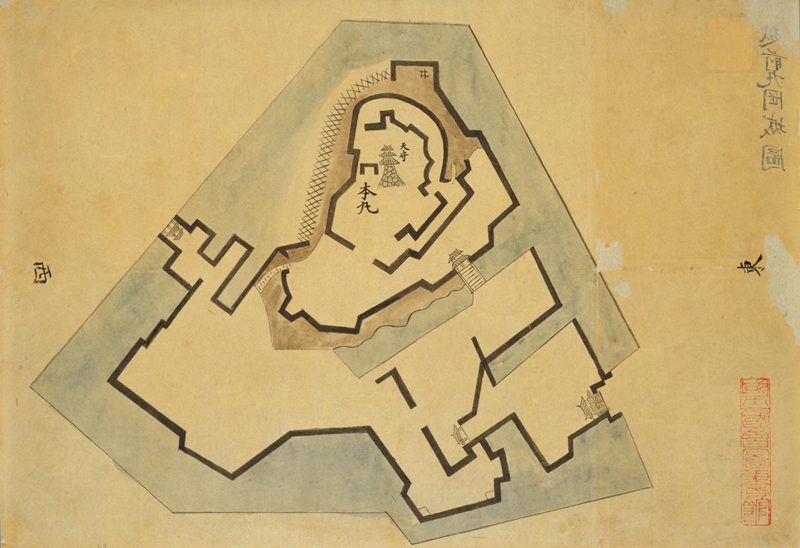
Collected by the Inagaki family, the Toba Daimyō from the mid-Edo period to the Meiji Restoration, as materials for military studies. There are about 350 illustrations, but there is no uniformity because only illustrations of castles, illustrations including castle towns, and old battlefield illustrations are mixed.
Another typical example of a castle picture in the Edo period is "The Shōhō Shiroezu", picture of the castle and castle town that the Edo Shogunate ordered the daimyō to create and submit,aggregating military information such as the buildings inside the castle, the height of the stone wall, the width of the moat and the water depth, etc., it also details the location and shape of the castle town and the mountain river.
Profile : Maruoka Castle Ruins
| Location | Sakai City, Fukui Prefecture |
| Also known as | Kasumiga Castle |
| Type of castle | Hilltop |
| Mountain's name | ー |
| Elevation | ー |
| Condition | Original Main Keep |
| Designation | National Important Cultural Properties |
| Year built | 1576 |
| Abolished | 1871 |
| Castle lord | Shibata Katsutoyo |
| Refurbishment lord | Arima Clan |
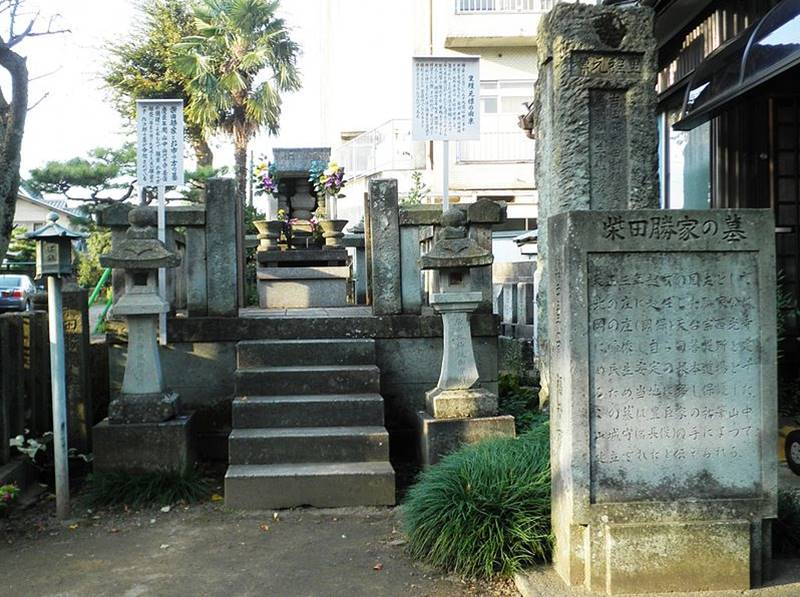
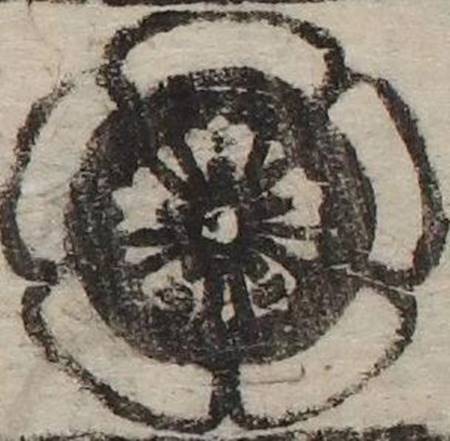
(produced by CODH) adapted from "Classical Japanese National Data Set" (Kokubunken Collection)
The family crest was originally created from the pattern that the emperor and the royal family put on the kimono, and the pattern was made into a fixed pattern, and the one attached to his own oxcart is said to be the beginning of the family crest. The warlords drew large crests on the flag-fingers, used to distinguish enemy views on the battlefield, and used by the generals to determine which warlords were active and how much.
Maruoka Castle admission
admission fee : 450yen (Adult) 150yen (junior High and elementary students)
admission time : am8:30-pm5
closing period : reference official site (japanese)
Maruoka Castle Google Map
Maruoka Images

The only existing castle with the main keep in Hokuriku , also said to be the oldest existing the tower. It is also known for its purposeful construction of an old-fashioned Sengoku period castle during the Edo period. A pentagon-shaped inner moat surrounds the main keep, and an outer moat that bends intricately around the outer wall. The main keep is a double third-floor, called "Bōrō-Type".
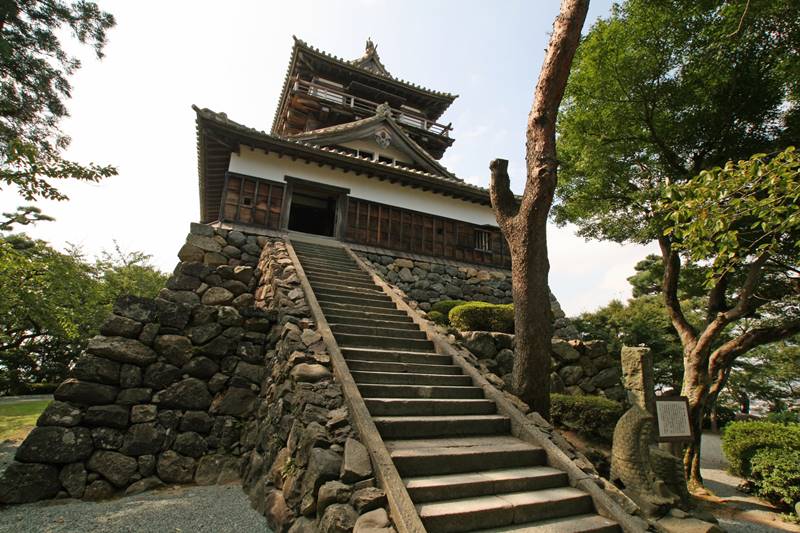
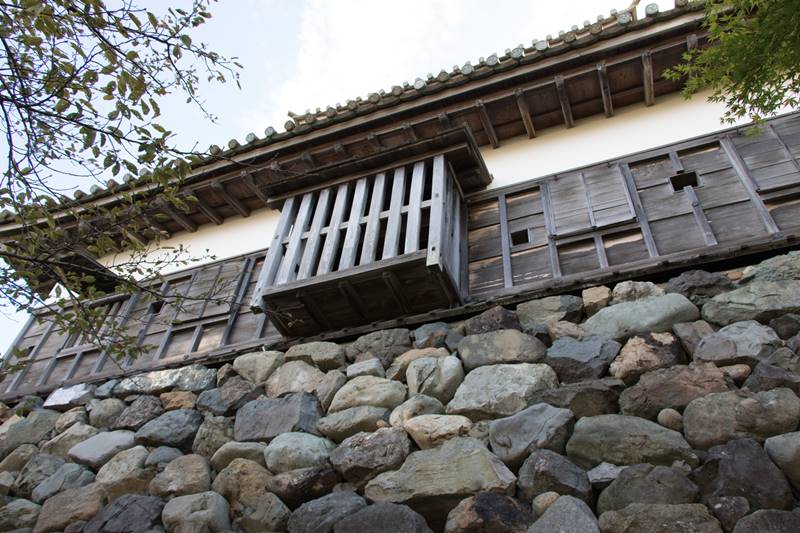
Ishi-otoshi is a device to protect the main keep, through which enemies climbing up the stone walls were attacked by stones or boiling water, etc. During the end of the Sengoku (Warring state) era, where the main weapon used in battles was matchlocks, it is believed that matchlocks were fired through these windows at enemies who tried to crawl up the stone walls.



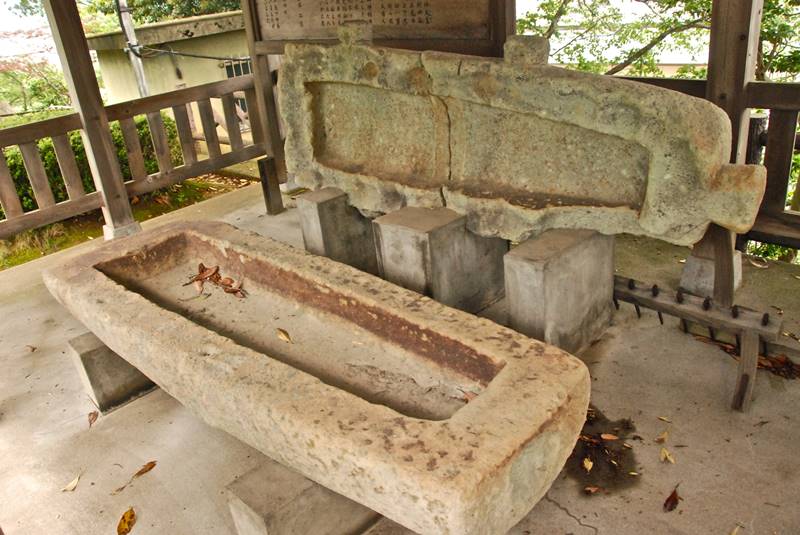
It is on the way to the slope following the Maruoka Castle castle tower, also referred to as the Furuhime family's sarcophagus. It was excavated from the Minoyama Burial Mound near Hakusan Shrine in Ushigashima, Maruoka Town. Designated cultural property of Sakai City, Fukui Prefecture.

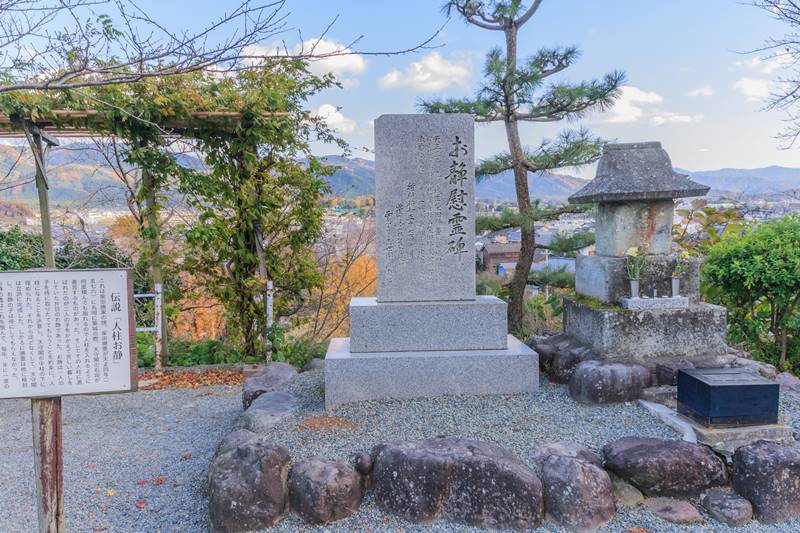
When constructing Maruoka Castle, the stone walls of the castle tower collapsed many times and construction did not proceed, so a human sacrifice was to be built. The poor one-eyed widow, Oshizu, who lives in the castle, offered to become a human sacrifice, on condition that his son succeeds in the rank of a tribe. The wish was accepted, and was buried in the ground, construction of the castle tower was completed successfully. However, Shibata Katsutoyo was soon relieved, and his promise to keep his son in charge was not fulfilled. It is said that Her ghost, who grudged that her promise was not fulfilled, became a big snake and rampaged. Every April, when the algae that grow on the moat of the castle are cut, Maruoka Castle was always hit by heavy rain, and people called it her tears of deep sorrow. Currently, her memorial remains in the castle.
Link-1 : Original Main Keep
【west japan】Marugame Castle 【west japan】Bicchūmatsuyama Castle 【west japan】Matsue Castle 【west japan】Himeji Castle 【west japan】Hikone Castle 【central japan】Inuyama Castle 【central japan】Matsumoto Castle 【north japan】Hirosaki Castle 【west japan】Kōchi Castle 【west japan】Uwajima Castle 【west japan】Matsuyama Castle 【central japan】Maruoka Castle
Link-2 : legend of human sacrifice
【west japan】Hikone Castle 【west japan】Ōzu Castle 【central japan】Maruoka Castle
